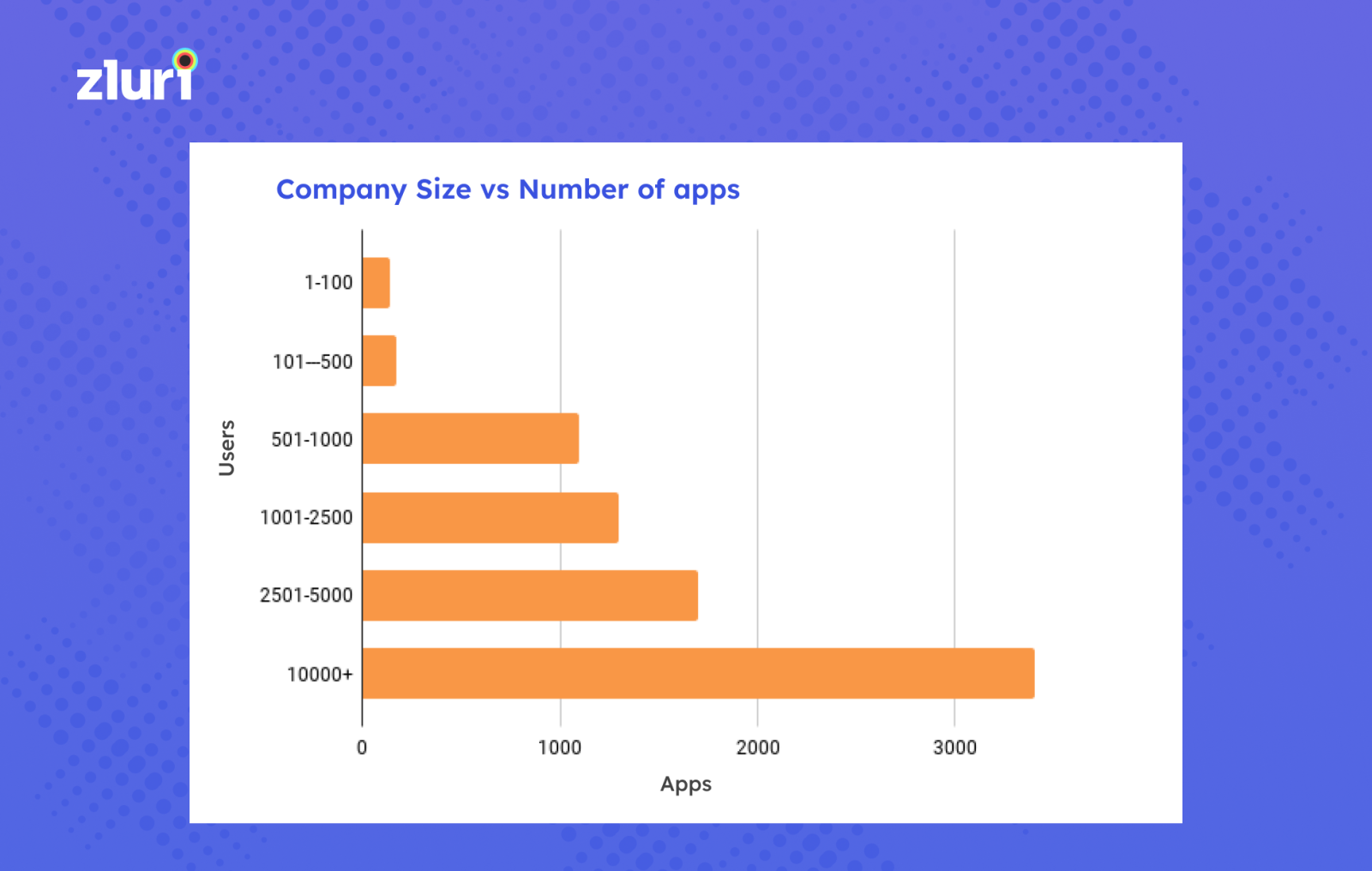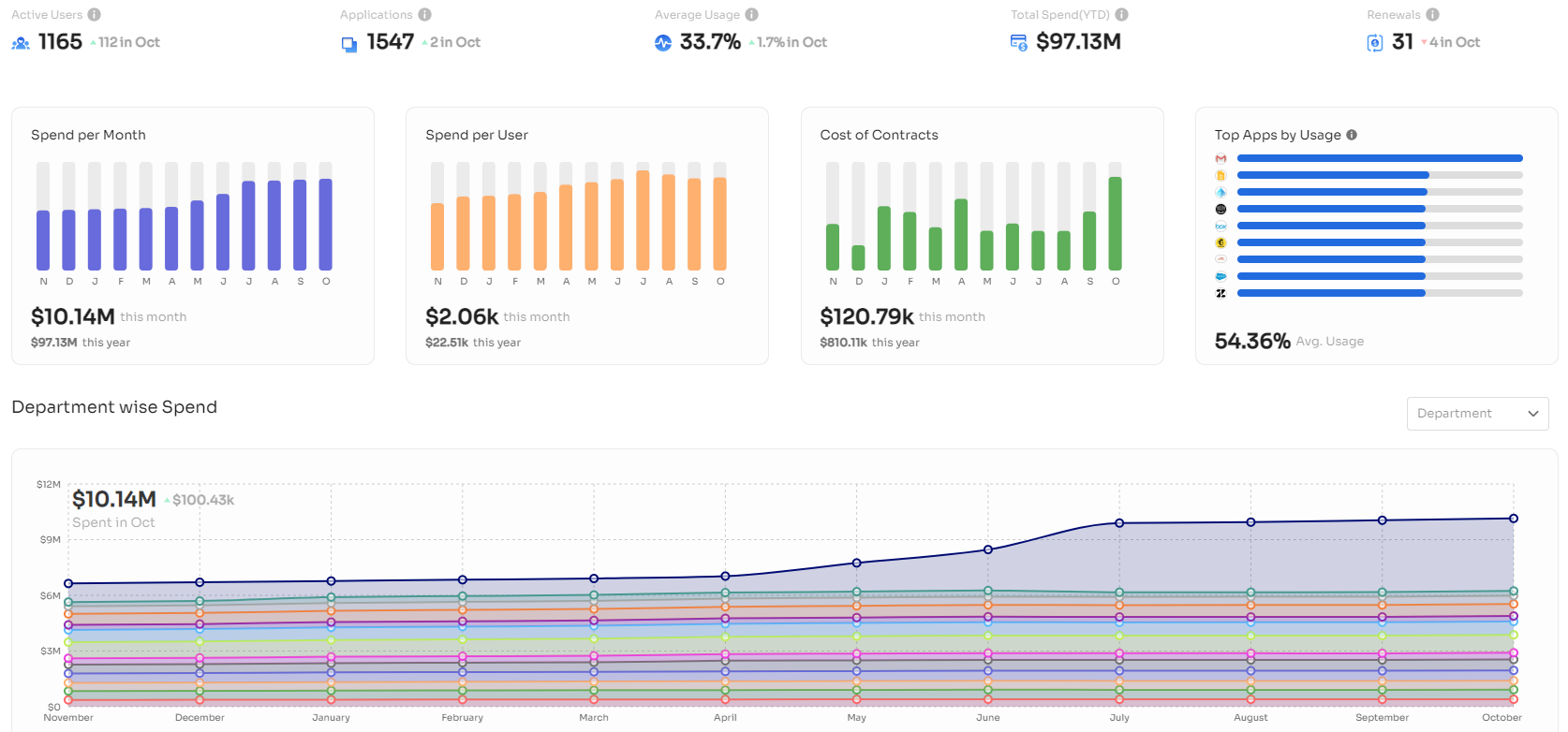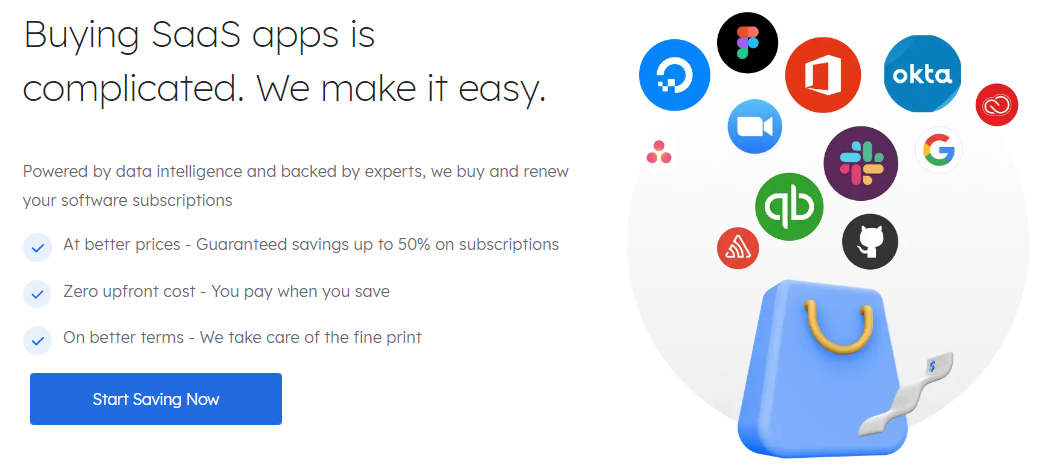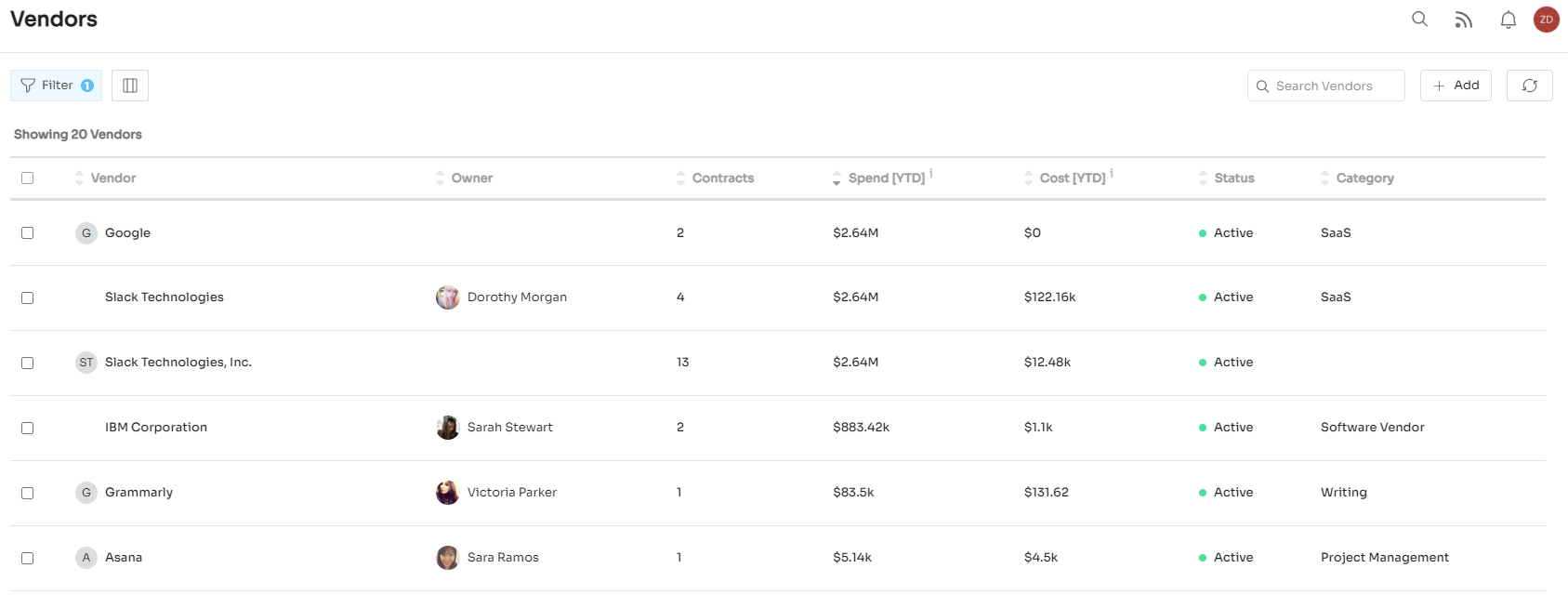Procurement
• 8 min read
5 Mistakes to Avoid While Estimating SaaS Spend
5th October, 2022
SHARE ON:
Estimating SaaS spending for organizations is essential to optimize resource utilization. IT admins should avoid a few common mistakes to estimate SaaS spending accurately to get the best out of apps without overspending.
As organizations use many SaaS apps, it is important to manage the resource accurately unless failing to estimate SaaS spending will affect your revenue.

The estimation can vary by little margins, but it has to be within the range. You have to be clear about your scope of estimations to avoid miscalculations.
If you don’t have urgent requirements, then wait before making any major decisions. Don’t do anything in a hurry. If you make all decisions within a specified period of time, ensure that such a short turnaround time for decision-making is reasonable and achievable.
For your understanding, we have prepared a list of five common mistakes. This will help you to avoid any possible mistakes while estimating your SaaS spend and save your resources from wastage.
Common Mistakes To Avoid During Estimating SaaS Spend
It becomes difficult for IT admins to keep track of spending manually. It can be inefficient and prone to human errors. An SMP introduction in your organization can be a fruitful investment to estimate the accurate speeding and optimized SaaS cost.
Zluri optimizes SaaS spending by removing unused, abandoned apps that use resources without IT team's knowledge. Zluri uses DUAAS framework to remove SaaS sprawl from your organization. It becomes important for your organization to be free from redundant and unused apps for proper estimation.

Zluri is an efficient SaaS management tool that tracks your SaaS spending and helps you to categorize it as monthly, yearly, department-specific and user-specific. It provides a single dashboard with all the required reports for you to take action against increased costs.

There are a few common mistakes IT admins make while estimating SaaS spending. In this article, they will be able to identify and understand their mistake and can take action to resolve them. It will not only help them to estimate their SaaS spending but also will help to minimize resource wastage.
1. Relying solely on SaaS providers or System Integrator partners
Your supplier’s primary focus is to close subscription deals. They don’t want you to know about negotiations or other procedures to get a discount. Your systems integrator (SI) partner also wants to close the deal and begin the project.
If the estimation is not proper, then it may lead to a loss of interest for customers. It may seem over the resource ability of the organization. So, it is important to understand the situation and do a cost estimation to manage and use the resource accordingly.
You should not be solely dependent on the prices set by SaaS provides. You need to have your own cost estimation, and accordingly, you can plan your SaaS spending. While SaaS buying, you can take help from any SaaS negotiation service that lets you save many resources.
Presenting a huge initial estimate may lead a customer to consider other partners or even cancel or delay a project. SI partners work closely with the SaaS providers. So to avoid any jeopardy, proper estimation is important.
SaaS negotiation services help you to get the best deal which lets you save a lot of money upfront.
When it comes to picking a SaaS tool, it is very important to pick a solution that will be worth your money in the long run. Organizations have an infinite number of SaaS suppliers to pick from. In such scenarios, going with the first vendor you assess is unwise. Although it could save you some time, it is possible that you end up losing a significant amount of money or paying more for services that you don’t even use or require.
For a successful SaaS buying, we suggest you to follow these three steps:
Conduct in-depth research on the web: Conduct a web for potential SaaS products in your preferred categories; this will lead you to their website, where you can learn more about the product and read customer reviews. It will also help you in analyzing their product features.
Ask for referrals: You can talk to individuals in your network and enquire about the SaaS solution they use in their organization and how it has performed so far. If they’re satisfied, you can search for that SaaS application vendor.
Shortlist a few potential vendors for negotiation: You can compile a list of potential vendors with estimated costs for evaluation, and after that, you can use it for further negotiation.
SaaS buying: Zluri analyzes your SaaS stack, centralizes your procurement process, makes proper strategic decisions, chooses the right tools, finds the right vendors and negotiates your contracts.

If you choose our services, you don't have to pay any upfront fees. You can pay after we save 50% of your SaaS buying cost. If we promise to save $36000, then you pay $180000 to Zluri. You don’t have to pay an extra amount if we save more.
2. Assuming subscription fees as the total cost of ownership
You should not estimate your SaaS spending by multiplying one subscription's cost by the total number of subscriptions required. Multiple contracts and discounts may be available for you with a certain number of subscriptions. So, if you do it manually, it will not be an accurate assumption.
Many organizations fall into this wrong estimation. The actual implementation cost will be based on the required effort to complete the project scope. It will depend on the number and complexity of the required configurations, integrations, and business process changes.
The implementation cost is going to be what is required to achieve the customer’s project goals. The price of the subscription deal does not drive it, but the subscription costs present much more opportunity to be negotiated, and discounting can vary widely between deals with similar bills of material and volumes.
It is highly unlikely to derive some formula for estimating accurate implementation costs on your project using prior project subscription costs and their associated implementation. It may vary substantially from your actual implementation costs. The implementation cost factors do not consider the customer’s internal level of effort and resource requirements.
Consider, you need to estimate the cost of a SaaS app for a 2-year tenure.
The app costs $600 yearly. You require 200 licenses for your organization. Now, if you only multiply, it will cost $120000 yearly, and in total, it will cost $240000.
But, the accurate estimation is different. Suppose one license costs $600 and you need 200 licenses; then the cost is $120000. Now, the company gives you a 40% discount after the negotiation, then it will cost $72000. If it is a 2-year contract and you get an additional 10% discount in the second year, then it will cost you $64200 for the next year. The total cost will be $136200.
As you can see here, a rough estimation is not always enough. One wrong estimation can make your budget go higher. This will impact the overall budget and the procurement process. To avoid this mistake, you need to be updated with the existing SaaS subscriptions, related discounts, and overall market planning. An SMP like Zluri can help you with precise SaaS cost estimation.
Manage Vendors and Contracts: Zluri maintains a nice relationship with vendors and your contracts. You get a single dashboard to monitor your SaaS vendors. Zluri saves your time by keeping all the SaaS contracts in a single place. Maintaining a nice customer relationship with vendors lets you get discounts on your SaaS purchase.

3. Overlooking additional costs
Your cost estimation can be inaccurate if you miss out on the hidden costs associated with fixed costs. SaaS apps provide a fixed cost, but you need to do in-app purchasing for some additional features. Also, there are some hidden charges available not mentioned upfront. So, to avoid inaccuracy in estimation, you need to have all the details required to estimate the SaaS app cost.
Suppose you purchased a SaaS app that has a fixed cost of $200 for the basic plan. You realized you need some additional features that will cost $110. Now, You have 100s of licenses for your organization. So, this add-on cost will be added to your previous estimation to correct the inaccuracy.
Some organizations believe that an estimated fixed fee with a stated variance range includes no additional costs. You should remember that the fixed fee only applies to the implementation partner’s estimated level of effort for the defined scope and assumptions.
The fixed fee is determined by conducting a time and materials estimate and then adding some percentage uplift as a contingency to allow for estimate and performance errors.
In some unique situations, fixed fees can be tied directly to the level of effort specifically identified or to just a duration of time with no commitment to actual delivery and completion of the project. Any fixed fee is still subject to change orders for the following:
Additive scope: With the variable scope of a project, the estimation can be changed. Suppose you have started a project with a proper estimation, but with time, you have implemented some additional features. It leads to extra resource usage. Thus, the estimation will change.
Assumptions that turn out to be false during implementation: Suppose you got some incorrect information due to a lack of resources or understanding. It will lead to altering the SaaS spend estimation.
Customer’s failure to complete work responsibilities on time: If somehow customers fail to fulfill their designated responsibilities, that can alter the project duration timing. Unless your cost will increase, change your spend estimation.
Customer’s failure to make decisions on time: Decision-making is essential to the business. Suppose customers fail to make the proper decision when getting efficient deals. It may happen the values are changed according to the scope and demand of the projects.
Late performance of any third-party work responsibilities: Suppose you have hired some third-party services for some work management, but it fails to deliver. Then it leads to wastage of time and effort. Thus it increases your SaaS estimation.
4. Negotiation with SaaS vendors before purchasing
Most organizations are unaware of proper negotiation services. You should not miss this opportunity. If you can’t do this on your own then you can take services from third-party services. With proper negotiation, you can save your effort and resources that can be used to introduce other SaaS in your organization.
Negotiation is the most efficient process of SaaS introduction in your organization. Negotiation uses its cumulative approach to track, analyze and do the contract for you with savings. If you properly analyze your SaaS requirement, compare different vendors, and get the best deal, you are already ahead in the business.
Zluri’s SaaS negotiation feature helps you get the best SaaS app.
Efficient Negotiation: Zluri’s expert negotiators close contracts for your organizations that help you to grow your business. The tool provides proper data reports, analysis, and expert negotiation metrics that help you crack the best deal for you.

Check one of our user's reviews about how Zluri helped them in negotiations with SaaS vendors

5. Wrong contract terms due to last-minute purchase
It’s not easy to negotiate an IT contract. Making last-minute decisions in a hurry can cost you heavily. You need a deep understanding of the solution, time-consuming research, data, and good negotiation skills to make good decisions. This all takes a good amount of time to talk things out.
When you put off buying software last minute, you lose a significant amount of control and money. Losing control means you’re stuck with the deals and terms that the supplier is willing to give. To avoid such mistakes, don’t let yourself get caught up in last-minute talks. Ask for a free trial or demo of at least 30 days, this will give you time to think about your current contract, ask for and make changes, or look for a different answer.
This method can save money, time, and frustration. You need to sign a contract for IT services to make sure you get them. It has clauses about pricing, data privacy and ownership, intellectual property rights, service level agreements, renewal, and other things.
With Zluri, you can get information about how SaaS is used and which vendors provide it. This lets you make smart choices about buying and renewing SaaS. You can also get good deals with the help of experts, like SaaS Buying from Zluri. This is a sure-fire win for you, since we only get paid when we save you money.
The improper contract length might cost you money and bind you into services you may not require for the term. When purchasing software, it is essential to understand what the solution or service delivers, how critical its features are, and how long you will need it.
Sometimes it is tough to make any decision. In this case, you can go with these two options:
Consider the annual term if you’re unsure how to utilize the software over time.
If the contract is expensive or complex, a multi-year contract also makes sense under the right circumstance.
Right circumstances mean you have proper knowledge about your usage requirements and how long you would need the tool. Make sure you have a general understanding of your user expectations and how they may evolve over time. Consider a solution's durability and operation before committing to it long-term.
Related Blogs
See More
Subscribe to our Newsletter
Get updates in your inbox
